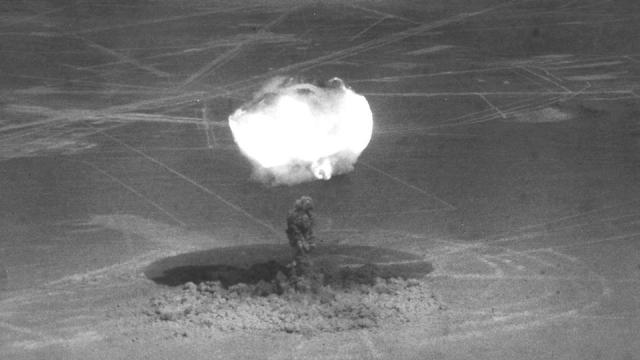In 1955, the Soviet Union tested a bomb designated RDS-37 at a missile testing site in northeast Kazakhstan. The bomb’s power had been scaled down for the test, but a relatively rare weather phenomenon gave it an unexpected, and destructive, increase in power.
The Semipalatinsk test site would, under normal conditions, have been a safe way to test Russia’s new nuclear bomb, RDS-37. Just to make sure the bomb, which would be air dropped over the site, would do little damage, researchers decreased its destructive capacity from 3 megatons (the equivalent of 3 million tons of TNT) to about 1.45 megatons. The nearest observational site was 58km away. The nearest village was farther. Granted, no one would actually want a nuclear bomb going off in their back yard, but it seemed as though no one would be immediately harmed by the test.
On November 22nd, the actual day of the test, some strange weather moved over the site. The common meteorological name for the phenomenon is an “inversion layer.” Usually, hot air generated by fires or ground radiation rises up through the relatively cooler air above it, and then disperses in the upper atmosphere. Sometimes, due to atmospheric pressure anomalies or hot air simply being blown in from another area, a layer of hot air gets sandwiched between cool air on the ground and cool air in the upper atmosphere. When hot air from chimneys or smokestacks travels up, it hits this layer of warm air and stops rising. This cap of hot air acts as a kind of dome over a city or a patch of land, sealing in gas and heat. In the past these have caused spraying pesticides during inversions, since any poisons that travel up into the upper atmosphere will often get bounced right back down.
But gas and particles aren’t the only thing that get reflected back down. Some people report hearing strange noises during inversions, as the sound waves from faraway trains, cars, or even conversations bounce back down from the inversion layer. In 1955, the shock wave from RDS-37 did the same thing. Although the inversion layer didn’t reflect all of the force of the bomb, a lot of the energy that was meant to shoot up into the upper atmosphere was reflected back down towards the ground. The soldiers observing the bomb from a covered trench 58km away saw the supports break and had the structure collapse on them. In a nearby village, people had their windows blown out, and one building collapsed. Only three people died, but a lot of people were wounded. The only good thing to come out of the test was to make researchers aware of the many factors that can affect the outcome of a weapons test.
